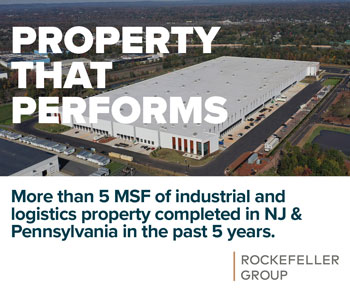By Matthew Kertz, Esq.
All of the industry conferences and panels I’ve attended over the last several months have one thing in common — in each, someone has uttered the phrase “Survive to ’25” or the Bee Gees variant “Stayin’ alive till ’25,” either seriously or perfunctorily, as nearly everyone in the commercial real estate market knows that 2024 is going to be a rocky year.
Why? Each of the players in the venerable trifecta of tenant, landlord and lender is having problems of their own. Commercial tenants, especially in office space, are still addressing the problems that began or were crystallized by COVID. Many companies have found that they do not need the amount of space on their current leases and are locked in now above market rents, and landlords will not or cannot take the space back due to financing constraints. Just for context, according to CoStar, nearly half of office leases executed pre-2020 still have yet to expire. Tenants are being forced to live with these leases, counting the days till expiration, and some are seriously contemplating a restructure or bankruptcy in order to shed the leases.
For landlords, there is currently too much unleased space available in many cities, and the aforementioned leases are in the process of burning off. An astonishing 19.6 percent of office space in major U.S. cities wasn’t leased as of fourth-quarter 2023, resulting in a 40-year high, reported the Wall Street Journal, citing a Moody’s Analytics report. There are indications that suggest this trend is going to get worse. CRED iQ, a commercial real estate data and analytics platform, recently published its analysis of CMBS office and mixed-use collateral properties, and from the reviewed pool noted 112 million square feet of office space is due to expire in 2024 and 105 million square feet of office space is due to expire in 2025, contrasting with the 21 million square feet that expired in 2023. While in a normal leasing climate, the majority of leases like these would be extended, every indication suggests the leases will be either allowed to expire or less space will be retained.
Even more troubling is the fact that $1.2 trillion of commercial mortgages are scheduled to mature this year and next, representing nearly a quarter of all outstanding commercial mortgages and the highest recorded level going back to 2008, as reported by Reuters, citing Goldman Sachs. $2.2 trillion of commercial property loans are set to come due by 2027, as reported by the Wall Street Journal, citing the data tracker Trepp. Landlords are faced with the tenancy issues noted above on one hand, and high rates on the other, making refinancing is extremely difficult. Moreover, for lenders, the value of the office market has decreased precipitately over the last few years. Barry Sternlicht, CEO of Starwood Capital Group, told the Global Alts conference, “The office market has an existential crisis right now. It’s a $3 trillion asset class that is probably worth $1.8 trillion. There’s $1.2 trillion of losses spread somewhere, and nobody knows exactly where it all is.” As banks, especially small and regional lenders, are grappling with cascading forecloses and defaults impacting a substantial portion of their portfolio (as seen in the latest news relating to New York Community Bancorp), fewer loans are being approved and the conditions for approval are becoming more onerous, creating a vicious cycle that threatens to significantly impact the entire commercial real estate market.
With all of this in mind, how does one survive in 2024? Here are some suggestions:
- Be prepared. Tenant or landlord, the writing is now on the wall that this upcoming year is going to be difficult. Marshal assets, engage in strategic planning, do not overextend and do not assume that this looming crisis will not impact you.
- Procure a short-term extension of your loan before maturity. If you have a commercial loan about to mature and have stretched resources, start the conversation with your lender now for a short-term extension.
- Be proactive. This current climate has placed many borrowers out of compliance with their loan’s financial covenants. As suggested by Jeffrey Rich, chair of the Genova Burns banking and commercial lending group, borrowers should begin exploring conversations with their lenders now, or else risk default and harsher penalties later on.
- Be flexible, but also be mindful of the risks. Leases can be restructured in order to ensure relief is provided to tenants while still ensuring landlords continue to be in compliance with their mortgages’ financial covenants. The key is reasonable risk allocation, and not binding the company to a short-term solution in exchange for long-term risk.
Matthew Kertz is a partner at the law firm of Genova Burns. Mr. Kertz chairs the firm’s Commercial Leasing Group and co-chairs the firm’s Distressed Assets Commercial Assets Real Estate Task Force with his partner Don Clarke, who specializes in bankruptcy.










